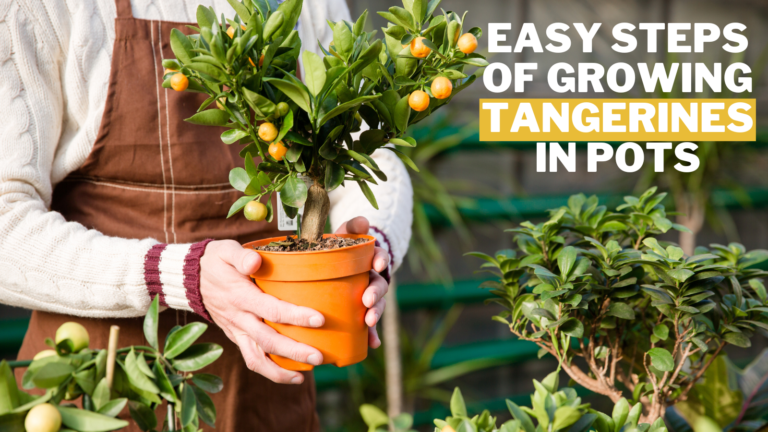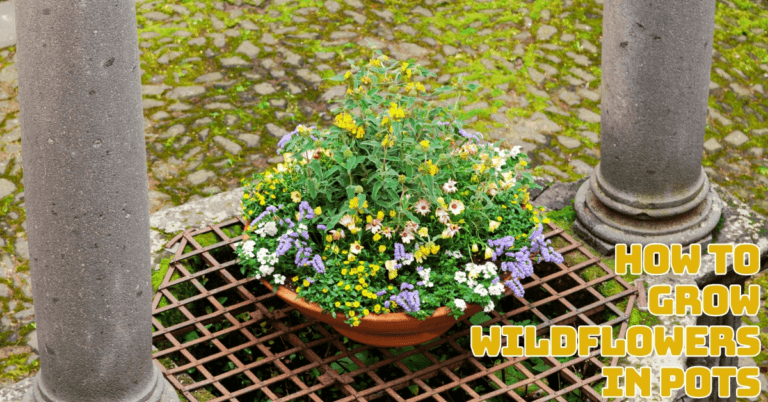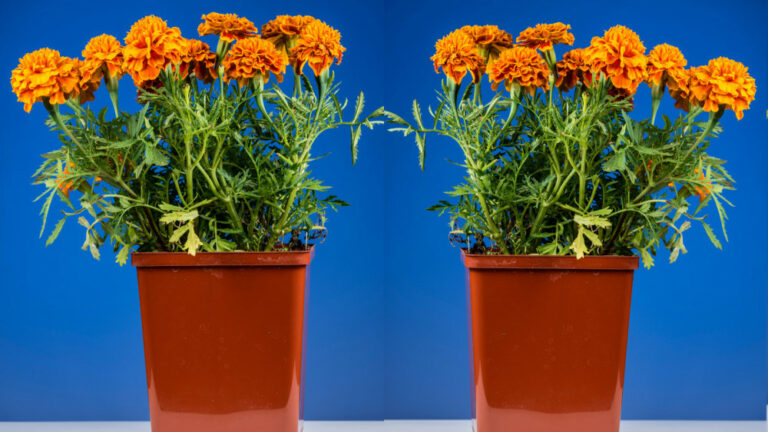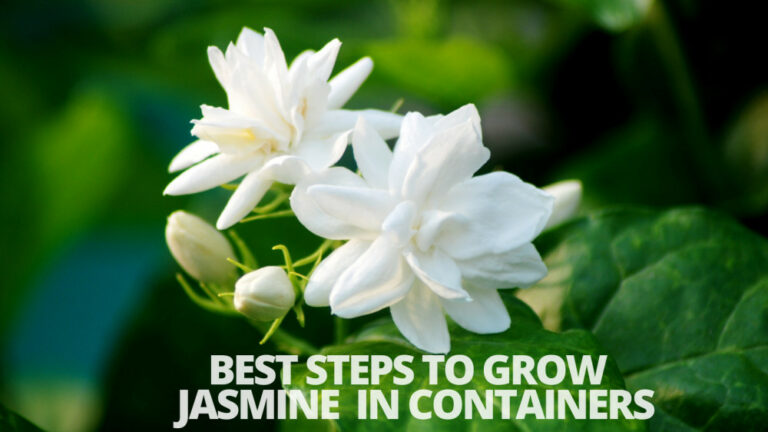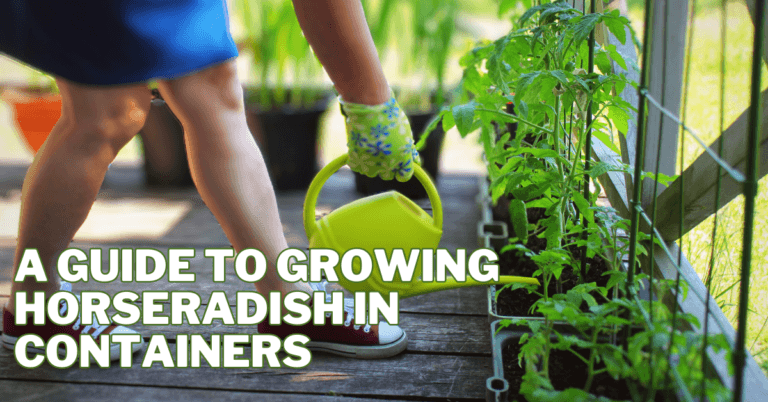Easy Steps To Grow Stevia In Containers
Easy Steps To Grow Stevia In Containers
Are you trying to find a sugar substitute that you can grow in your backyard garden? Stevia should be grown by you.
Stevia is a low-calorie, natural sweetener made from a herb. It's excellent for people with diabetes who must avoid sugar or those who don't want the added calories.
But how is stevia grown? Are there any specific things you need to be aware of before planting? The blog will help you grow stevia in containers, ideally.
What Is Stevia?
Stevia may be unique among food ingredients due to its high value for what it doesn't do. No calories are added.
Stevia comes from a plant, unlike other sugar substitutes. Some concerns about its usefulness as a diabetic diet strategy or as a weight loss aid.
Stevia is a plant in the Asteraceae family, along with ragweed and daisies. The states of New Mexico, Arizona, and Texas are home to several stevia species, including candy leaf.
However, the prized species of stevia, Stevia rebaudiana (Bertoni), is native to Paraguay and Brazil, where people have been using stevia leaves to sweeten food for hundreds of years.
Moises, even though the Guarani people of the region had been using stevia for centuries, an Italian botanist named Santiago Bertoni is frequently given credit for discovering it in the late 1800s.
The plant's leaves, which the native population called “kaa-he” (or “sweet herb”), had a wide range of applications.
In these areas, stevia was used as a treatment for burns, colic, and stomach issues, and occasionally as a contraceptive in traditional medicine.
The leaves were also chewed on their own as a sweet treat. Bertoni initially referred to the plant as extremely rare because it took him more than ten years to discover it.
Around the same time, more farms began cultivating and harvesting the stevia plant. Stevia quickly transitioned from an herb that only grew naturally in a few places to being widely available.
History Of Stevia
This well-known herb has been used as a sweetener for ages in South American nations. Depending on where the plant is grown, the two chemicals stevioside and rebaudioside A, which are glycosides, are 40 to 300 times sweeter than sucrose (Source: Stephen Orr's New American Herbal).
Stevia and its extracts contain no calories, few carbohydrates, or a low glycemic index. However, because it can have a bitter aftertaste, you should introduce it to your palate in small doses until you get used to it.
To help your taste buds adjust, use the conversion table at the end of this article and replace half of the sugar in a recipe with stevia.
Types Of Stevia
Understanding that not all stevia sweeteners in today's options are created equal is crucial. The FDA has been slow to approve all stevia leaf extracts and other products as GRAS, probably because there has been a concern recently about fake stevia or products laced with undesirable ingredients.
These forms' comparisons include the following:
- The least processed variety is raw stevia, also known as green leaf. The final product, which is only a few hundred to one thousand times sweeter than sugar, is made from dried and powdered leaf material. Most likely, stevioside and rebaudioside are combined in this unprocessed version.
- Purified stevia extracts are also available. In the U.S., this sweetener is composed of rebaudioside A in either a pure extract or our third type (altered blends). Per FDA standards outlined in 2008, these extracts must contain over 95% pure rebaudioside A glycosides. They may not include other forms of rebaudioside or stevioside to be legally marketed as food. While purified stevia extracts are more processed than green leaf varieties, their health perks seem on par with those of their unprocessed counterpart.
- The least healthy choice is modified stevia blends. It is estimated that many purified stevia extracts and altered blends are 200–400 times sweeter than sucrose when a product like this is placed on the shelf. Some businesses use processes to make these blends that contain toxic acetonitrile, an erythritol-based derivative from corn, and chemical solvents. Only in the United States is a small amount of rebaudioside A left.
Steps To Grow Stevia In Containers
1. Locations To Grow Stevia
The first thing you need to do is choose where in your garden to grow stevia. This plant adores the sun, so you must choose a location that receives full sunlight. It requires 6 to 8 hours of sunlight daily, though more is ideal.
Planting stevia in an area with afternoon shade can be advantageous if you reside in a region with sweltering summers. The only exception to the need for full sunlight is that.
2. Suitable Soil To Grow Stevia In Containers
The next thing you need to consider is the soil for stevia. It must drain well and have a pH between 6.2 and 7.2.
Loamy, loose soil is ideal for stevia. Two to three weeks before planting, you should add compost to the soil to improve drainage and add more nutrients.
3. Time To Plant Stevia In Containers
You must give your plants regular watering. Stevia doesn't like wet or stagnant water, but they also don't like dry soil.
To determine whether the top inch of the soil is dry, stick your finger into the ground. If so, watering your plant is now necessary. If not, recheck the following day.
Remember that stevia plants' leaves wilt quickly, especially when the soil is dry. The good news is that the plant quickly recovers after receiving a drink of water. Avoid wilting as much as possible because it puts the plant under stress.
4. Mulching Stevia
Mulching is always a good idea for stevia plants. On hot summer days, mulching helps keep the soil from drying out.
Another perk is that mulching helps regulate soil temperature. It keeps the soil cooler on hot days and warmer on cool days.
Remember that mulch also discourages weed growth because nobody likes dealing with weeds.
5. Pruning
Stevia doesn't NEED to be pruned, but it will grow more effectively and produce more leaves if you do.
To promote branching, repeatedly prune the plant. The first trimming should be performed when the plant is about 8 inches tall. Then, repeat the process in the early summer.
Don't just throw the trimmings away! To grow more stevia plants, you can re-root them in potting soil.
6. Winter Care Of Stevia
Stevia is considered a winter-hardy plant if you live in USDA hardiness zone 8 or higher. It develops as a perennial with winter mulch.
If you don't live in one of these warmer zones, you can grow and prepare healthy parent plants to overwinter indoors and plant outdoors in the spring.
Pick a 1-year-old plant to do that with. Reduce the height to 6 inches. If the plants are in containers, move them to a warm, sunny spot or a heated greenhouse.
When new growth appears in the spring, you can cut off fresh stems and root them in a seed-starting medium.
7. Pests & Disease Problems Of Stevia
One of two issues typically arises when people grow stevia. They notice the following:
- Don't be surprised if your stevia is ultimately killed off if you live in a colder climate and get chilled to the bone. This occasionally occurs.
- We advise either bringing the plant inside to protect it from the winter elements or covering it until it goes dormant.
- Then, hopefully, it will return the following year. Stevia should be grown as an annual plant if not. Every year, you can start it from seed to reduce costs.
- Stevia needs to be planted in areas with well-drained soil. The plant's roots will rot if they receive too much water, which is the cause.
- This will cause your plant to perish. To avoid this, it's crucial to use high-quality soil that is loose and well-drained.
- This disease affects the leaves and midrib and causes small, reddish, rounded spots with white or gray centers. The lesions can occasionally encircle the stems, causing the plant to wilt. Warm or humid weather makes it worse.
- Avoid wetting the foliage, and always remove any infected plant parts. Keep the plants apart to allow for proper airflow.
- This unpleasant fungus causes grey mould to develop on the plant's stems, leaves, flowers, and other parts. It prefers cool, rainy weather.
- If you see this fungus growing, remove the entire plant and stop watering at night.
- One of the most frequent issues when starting plants from seeds is that the seedlings initially appear healthy, but suddenly, they begin to wilt. A fungus called damping-off typically develops in overly wet soil or soil containing excessive nitrogen.
- Keeping seedlings moist is crucial, but you should also avoid overwatering. Never overfeed your seedlings; thin them out immediately to prevent crowding. Additionally, wash containers before reusing them. To kill any remaining fungus, add a little bleach to the containers.
- Small, spotted insects known as aphids come in various colours, including red, black, green, yellow, brown, gray, and peach. They typically cling to the underside of the leaves as they suck on them. They eventually leave behind a sticky residue that draws ants.
- With the help of a jet of water from your hose, you can remove aphids from the leaves. Use insecticidal soap on the leaves as an alternative.
- You are most likely familiar with slugs' appearance! They either eat the entire leaf or leave large holes in the foliage. Slime trails are easier to find in the morning because slugs are more active and feed at night.
- Go into your garden at night and manually remove them from your plants. You can also try luring them into beer—or cornmeal-based traps.
8. Harvesting Stevia
Stevia can usually be harvested twice a year: once in early fall when new growth has slowed and once in midsummer by pruning the plants back to half their size.
Stevia can be dried in bunches like other herbs, but for better quality, dry it until crisp in a dehydrator or an oven set to 150°F.
Dried stevia leaves should be kept in an airtight container in a cool, dark location. Crush them only when you're ready to use them.
How To Keep Stevia Leaves Fresh
Harvested plants are dried for 24 to 48 hours at low heat (95-120°F) and with good air circulation.
If you have a lot of stems, you can dry plants in the sun and then thresh them to separate the sweet leaves from the bitter stems. You can also use a dehydrator to dry leaves.
Whole dried stevia leaves can be kept in airtight containers or plastic bags for a year. Pay attention to humidity levels to prolong their shelf life.
Once dried, the leaves can be crushed into a fine powder. Grind them in a food processor or coffee grinder, or use a mesh screen. The powder should be kept in an airtight container.
Are There Advantages To Stevia Use?
Stevia is a non-nutritive sweetener that contains almost no calories. This feature might appeal to you if you're trying to lose weight.
However, the research is still ambiguous. The effect of nonnutritive sweeteners on a person's health may vary depending on how much is consumed and when during the day. Stevia may assist diabetics in managing their blood sugar levels.
Stevia significantly reduced insulin and glucose levels, according to a 2010 study with 12 obese and 19 healthy, lean participants.
The lower calorie intake also made study participants feel satisfied and full after eating. One limitation is that this study was conducted in a lab rather than a person's actual environment.
Additionally, a 2009 study found that stevia leaf powder may help lower cholesterol. Over a month, study participants ingested 20 millilitres of stevia extract daily.
According to the study, stevia reduced triglycerides, LDL (“bad”) cholesterol, and total cholesterol without causing negative side effects.
Additionally, HDL (“good”) cholesterol was raised. It's unclear whether occasionally consuming less stevia would have the same effect.
Are There Any Negative Effects Of Stevia?
According to the FDA, whole-leaf stevia or crude stevia extract have not been approved for use in processed foods and beverages due to a lack of safety information, even though stevia glycosides like Reb-A are “generally recognized as safe.”
Some people worry that consuming raw stevia could harm their kidneys, reproductive organs, and hearts.
Additionally, it might interfere with blood-sugar-lowering medications or cause too-low blood pressure.
Although stevia is safe for people with diabetes, brands containing maltodextrin or dextrose should be avoided.
Maltodextrin is a starch, and dextrose is glucose. These ingredients increase calories and carbs in a negligible way. Sugar alcohols may slightly tip the carb count.
Although the occasional use of stevia might not be sufficient to affect your blood sugar levels, the carbs add up if you consume them throughout the day.
2019 research, Nonnutritive sweeteners like stevia have been linked to a possible disruption of the healthy intestinal flora.
The same study suggested that nonnutritive sweeteners could cause metabolic disorders and glucose intolerance.
A significant drawback of most nonnutritive sweeteners is their taste. A mild, licorice-like flavour with a touch of bitterness characterizes stevia. It appeals to some people while repelling others.
Some people may experience digestive issues from stevia products made with sugar alcohol, such as bloating and diarrhea.
Is It Safe To Use Stevia While Pregnant?
When used in moderation, Reb-A-based stevia during pregnancy is safe. Select a brand without erythritol if you have a sensitivity to sugar alcohol.
Pregnant women should avoid using whole-leaf stevia, crude stevia extract, and homegrown stevia.
The idea that a highly refined product is safer than a natural one might seem strange. This is a typical herbal product mystery.
In this instance, Reb-safety A's both during pregnancy and outside of it have been examined. The natural form of stevia hasn't changed.
There is currently insufficient proof that whole-leaf stevia or unprocessed stevia extract won't cause harm to your unborn child.
Conclusion
Including those who are pregnant or have diabetes, stevia products made with Reb-A are considered safe.
Rarely do these products have side effects. More research must be conducted on diabetes management, weight management, and other health issues.
You won't need to use it as much because stevia has a much higher sweetness than table sugar.
Although whole-leaf stevia has not been approved for commercial use, it is still possible to grow it at home.
Many people contend that whole-leaf stevia is a safe substitute for table sugar or its highly refined counterpart despite the lack of research to support this claim.
A great way to always have a natural, locally sourced, minimally processed sweetener on hand is to grow your stevia.
Like other herbs, stevia plants love the sun and warm weather and need little fertilizer. Once they reach maturity, harvest the leaves regularly to keep the plant bushy and full.
I trust you enjoyed this article on the Easy Steps To Grow Stevia In Containers. Please stay tuned for more blog posts soon. Take care!
JeannetteZ
>>>Please click here to read my all-inclusive article about A Comprehensive Guide To Healing Naturally<<<
>>>Are you interested in Natural Healing through Herbs? Please click here for my #1 Recommendation<<<
Your Opinion Is Important To Me
Do you have thoughts, ideas, or questions? I would love to hear from you. Please leave me your questions, experiences, and remarks about this article on the Easy Steps To Grow Stevia In Containers in the comments section below. You can also reach me by email at Jeannette@Close-To-Nature.org.
Disclosure
This post may contain affiliate links. I earn from qualifying purchases as an Amazon Associate and other affiliate programs. Please read my full affiliate disclosure.
You might also enjoy these blog posts:
All About Healing Visualization And What You Need To Know
Most Essential List Of Healing Herb Plants
What You Need To Know About Sound Healing
Meditation Techniques And Its Health Benefits
The Ultimate Guide To Massage Therapy














